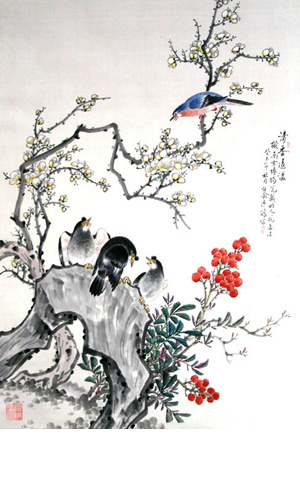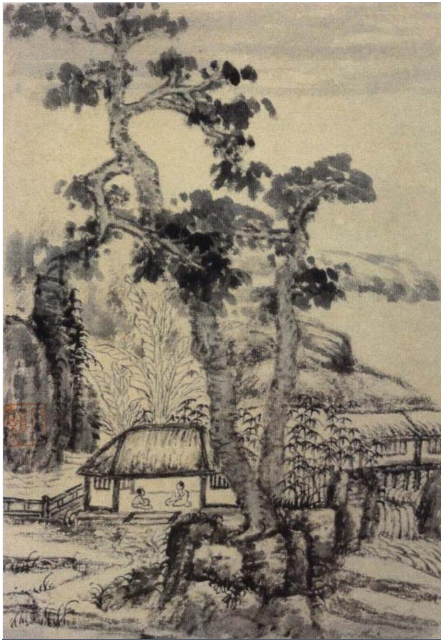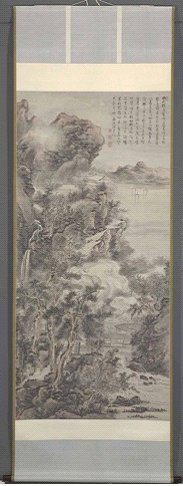 我觉得这幅画很漂亮啊。因为画大部分没有颜色,所以有颜色的物出众。这幅画有四只鸟。三只在小树下,一只在小树上。小树下的鸟都没有颜色, 都是黑白, 可是树上的鸟很漂亮!是蓝色和红色的。跟别的画里的鸟可不一样。小树下也有一个花木。 这个花木也有颜色的。有红色的水果。
我觉得这幅画很漂亮啊。因为画大部分没有颜色,所以有颜色的物出众。这幅画有四只鸟。三只在小树下,一只在小树上。小树下的鸟都没有颜色, 都是黑白, 可是树上的鸟很漂亮!是蓝色和红色的。跟别的画里的鸟可不一样。小树下也有一个花木。 这个花木也有颜色的。有红色的水果。
这幅画是Chen Jun 画的。 他很重视传统的画, 因为他的爸爸和爷爷都画画。 他的伯伯教他怎么画传统的画。 他从小到大学传统的画和理解为什么这些画对中国文化很重要。现在,他难过了,因为他女儿 没学过画传统中国画。他希望他可以找到别的喜欢传统中国画的人可以继续做这个艺术。
我觉得这幅画代表脱漏。 树下的 鸟一起站, 因为他们是一样的。不一样的鸟它们脱漏。 树上的鸟要自己站,因为别的鸟嫌它美丽。虽然别的鸟不喜欢它, 它还是最高的鸟啊!不好看的鸟在漂亮的鸟的下面,所以最高的鸟还高兴地唱歌!
Translation:
I think that this painting is very pretty. Because the majority of the painting has no color, the objects with color stand out. This painting has four birds. Three are below the small tree and one is atop the small tree. The three birds on the bottom of the tree all are colorless, they are in black in white, but the one on top of the tree is very pretty. It is blue and red. It is definitely different from the other birds in the painting. Below the tree there is also a plant. This plant also has color—it has red fruit.
This painting is painted by Chen Jun. Chen Jun places much importance on traditional Chinese paintings because both his dad and his uncle painted them. His uncle taught him how to paint traditional Chinese paintings. From childhood to adulthood he has learned about traditional Chinese paintings and understands why these paintings are so important to Chinese culture. Now, he is upset because his daughter never learned to paint traditional Chinese paintings. He hopes he can find other people in China that like to traditional Chinese paintings and can continue the art.
I think that this painting shows people who exclude. The birds below the tree are all the same; they stand together. The bird that is different, the other birds exclude. The bird atop the tree stands alone because the other birds don’t like its beauty. Although the other birds don’t like him, he is still the tallest bird. The other birds are below him, so the bird still happily sings!




